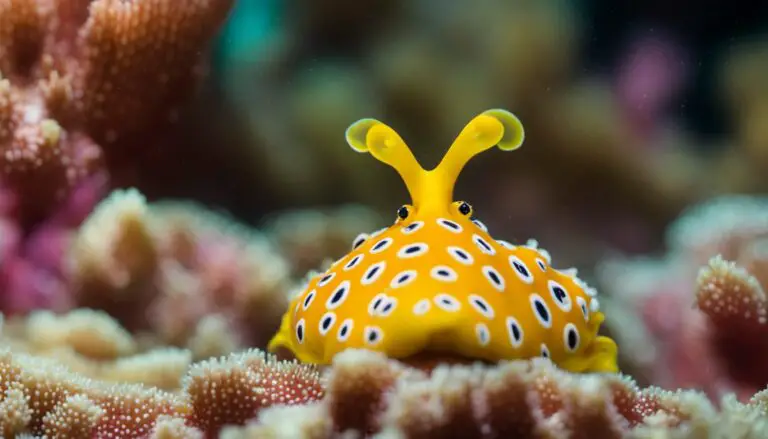How Big Do Bladder Snails Get: A Comprehensive Size Guide

Bladder snails, belonging to the Physidae family, are fascinating creatures commonly found in aquariums. These small gastropods typically attract the attention of hobbyists because of their ability to keep tanks clean, but they may also be seen as pests by others. As you explore the world of these unique aquatic dwellers, it’s important to understand their characteristics, including their size. How Big Do Bladder Snails Get? Let’s discuss it!

Physella acuta, one of the most well-known species of bladder snails, is quite small compared to other snail species. Their size usually ranges from 0.4 inches (1 cm) to a maximum of 0.6 inches (1.5 cm) in length and 0.3 inches (0.7 cm) in width. With their distinct left-handed, anticlockwise spiraled shells and egg-shaped appearance, bladder snails are interesting additions to your aquarium.
Understanding how big bladder snails can get is essential for proper tank management. By learning more about their size and growth patterns, you can ensure that your aquarium environment suits these creatures and maintains a healthy ecosystem.
Contents
Table of Contents
Understanding Bladder Snails

Appearance and Identifying Features
Bladder snails have a unique appearance with their translucent, egg-shaped sinistral shells. Sinistral indicates that their shells spiral to the left, which is quite rare among snails. They generally do not grow larger than 1 cm (0.4 inches), though the largest individuals can reach up to 15 mm (0.6 inches) in length and 7 mm (0.3 inches) in width. Their shells have approximately 4 to 5 whorls.
Behavior and Temperament
Depending on the owner’s perspective, these snails exhibit peaceful behavior and are often considered helpful aquarium cleaners. They feed on both plant-based and animal-based food sources like algae, detritus, small invertebrates, and fish eggs. Bladder snails play an important role in maintaining the aquarium environment and make good tankmates due to their non-aggressive nature.
Habitat Distribution
Bladder snails are native to Europe and have been introduced to other parts of the world, including America. They inhabit various freshwater environments like rivers, streams, and ponds. These snails are quite adaptable and can survive in diverse water conditions, making them suitable for many aquarium setups.
Lifespan
The lifespan of bladder snails can vary depending on their living conditions and available food sources. With proper care, they can live up to 12-18 months. Remember that they reproduce quickly, so if you plan to add them to your aquarium, be prepared to manage their population through natural or manual methods.
By understanding bladder snails’ appearance, behavior, habitat distribution, and lifespan, you’ll better appreciate their role in your aquarium ecosystem.
Bladder Snails in an Aquarium
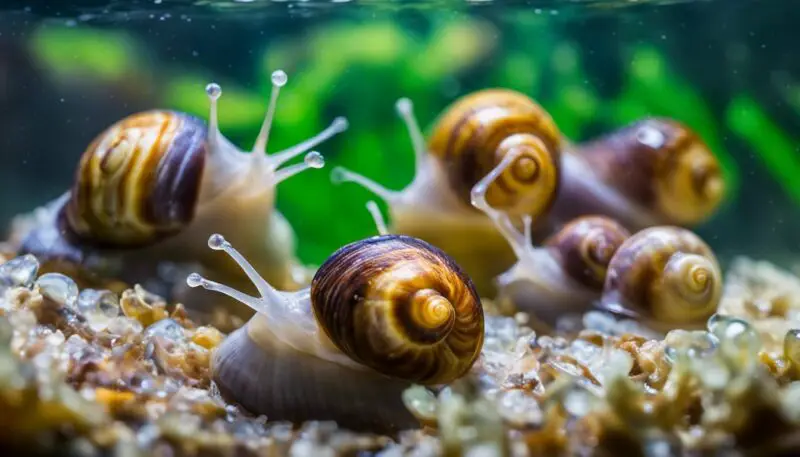
Ideal Tank Conditions
To provide the best environment for bladder snails, it’s essential to have a clean and well-filtered aquarium. The ideal tank size for these little creatures is at least 5 gallons. Bladder snails prefer water parameters such as a pH range of 7.0 – 7.5 and a temperature between 70 – 78°F.
Maintaining a stable calcium supply is also important, as it contributes to their shell health. Keeping live plants in the tank will improve water quality and give them a place to cling to and graze.
Suitable Tank Mates
When choosing tank mates for your bladder snails, it’s crucial to consider species that won’t prey on them. Ideal tank mates include various peaceful community fish such as Tetras, Guppies, and Platies. Other snails, like Nerite or Mystery snails, can also be suitable. However, it’s best to avoid housing bladder snails with aggressive or snail-eating species like Loaches or Pufferfish.
Bladder Snail Care and Maintenance
Establishing a regular maintenance routine is important to ensure your bladder snails stay happy and healthy. Clean the tank regularly, as excess waste and debris can lead to poor water conditions affecting their health. In terms of diet, these snails are known for their adaptability, being both herbivores and scavengers.
Offer them a balanced diet consisting of algae wafers, leafy greens, and other aquarium-safe vegetables. They will also consume leftover fish food, decaying plant matter, and detritus, contributing to keeping the tank clean.
Remember to monitor their population, as bladder snails can rapidly reproduce. To manage their numbers, avoid overfeeding, and promptly remove any eggs or baby snails you find.
Feeding and Diet
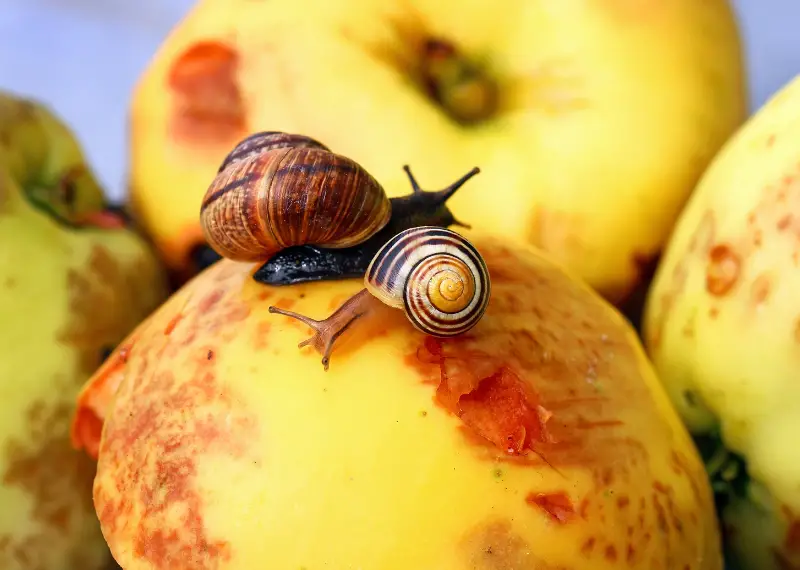
Common Food Sources
Bladder snails are omnivorous creatures that primarily feed on algae and detritus. They are capable of consuming a variety of food sources to maintain a healthy diet. They will eat meat, vegetables, and decaying plants.
In an aquarium, you can offer these snails algae wafers, sinking pellets, and vegetable-based foods, such as blanched spinach or zucchini. Bladder snails will also help reduce the amount of uneaten food and debris in your tank as they clean up any leftover bits that your fish might leave behind.
Effects of Overfeeding
Overfeeding your bladder snails can lead to several issues both for the snails’ health and your aquarium’s well-being. When excess food is available, the population of bladder snails can increase rapidly, potentially disrupting the balance of your tank.
In addition to increasing the snail population, providing too much food can lead to water quality issues such as high ammonia and nitrite levels. Overfeeding can cause uneaten food and snail waste to accumulate, increasing detritus and unhealthy water conditions.
To maintain a balanced ecosystem in your aquarium and keep the bladder snail population in check, it is important to be mindful of their feeding habits and provide an appropriate diet. Doing so can ensure a healthy environment for your snails and other aquarium inhabitants.
Reproduction and Breeding

Breeding Behavior
Bladder snails are known to be prolific breeders, which means they can rapidly multiply under the right conditions. These snails are hermaphrodites, possessing both male and female reproductive organs. This unique characteristic allows them to reproduce both sexually and asexually, depending on their environment.
When food sources are abundant, you will likely observe an increase in their reproduction rate. They lay capsules containing 40-100 eggs every three months, contributing to their rapid population growth in your aquarium source.
Population Control Measures
If you notice an overpopulation of bladder snails in your tank, several methods are available to help control their numbers and maintain a balanced ecosystem. These measures include:
- Manual removal: You can remove the bladder snails using your hand, a net, or a specialized snail trap. This method is time-consuming but effective in reducing their population.
- Predatory species: Introducing natural predators, such as assassin snails, or certain fish species, like loaches, can help regulate the bladder snail population. However, be cautious when adding new species to your tank; ensure they are compatible with your other inhabitants and do not disrupt your aquarium’s balance.
- Control food sources: Bladder snails thrive on excess food, uneaten fish food, and decaying plant matter. By managing these factors, you can limit their reproduction and encourage a reduction in their numbers.
By understanding bladder snail reproduction and breeding patterns, you can better monitor their population and implement appropriate control measures. Employing these strategies will aid in maintaining a balanced and healthy aquarium environment for all your aquatic creatures.
TIPS & TRICKS for Breeding Bladder Snails:
Bladder Snails and Their Environment
Interaction with Plants
Bladder snails are known for their interaction with plants in the aquarium. They feed on algae and dead plant matter, helping to keep your aquatic environment clean. Typically, bladder snails are harmless to healthy plants; however, they might feed on weaker or decaying plants.
As a result, it’s essential to monitor your plants’ health and remove any unhealthy parts to prevent bladder snails from causing further damage.
Key Predators and Threats
In their natural environment, bladder snails have various predators, including fish and crayfish. Pond snails and freshwater snails often coexist within the same ecosystems, creating competition for resources. Bladder snails have a unique shell structure that spirals to the left, making them an easy target for predators with sinistral shells.
Aquarists often introduce Assassin Snails to control the bladder snail population within their tanks. These predators specifically target snails and help maintain a balance in the aquatic environment.
Bladder Snails as Pests
Although some people consider bladder snails as helpful aquarium cleaners, others view them as pests due to their rapid reproduction rate. If left unchecked, these snails can overrun a tank and put a strain on the ecosystem. To keep their population in check, you might want to introduce natural predators, like Assassin Snails, or manually remove them from the tank.
Remember, it’s crucial to maintain a balance in your aquarium to prevent bladder snails from becoming pests. By closely monitoring your aquatic environment, introducing appropriate predators, and taking care of your plants, you can create a healthy ecosystem for all inhabitants.
Health and Longevity

Common Ailments and Treatments
Bladder snails can suffer from a few common ailments. Shell erosion is an issue often caused by a lack of calcium in the water. To prevent this, you can supplement their diet with sources of calcium, such as cuttlefish bone. Alternatively, you can add crushed coral or limestone to the substrate, slowly releasing calcium into the water.
Another typical issue that bladder snails face is poor water quality. Poor water parameters can lead to stress, slow growth, and reproductive issues. Regular water changes and appropriate filtration can help mitigate this problem. Testing the water and maintaining a stable temperature, pH, and hardness will also contribute to their overall health.
Importance of Aquatic Conditions
Maintaining optimal aquatic conditions for your bladder snails is crucial for their health and longevity. Bladder snails are adaptable creatures; however, they have specific water parameters that must be met for them to thrive. Here are some important aspects to monitor in your aquarium:
- Temperature: Ensure the water temperature stays stable within the range of 18 to 25°C (64 to 77°F).
- pH: Maintain a pH level between 6.5 and 8.0, with slightly higher alkalinity being more favorable for shell growth.
- Hardness: Keep the water hardness within a moderate range of 75-175 ppm. This will provide necessary minerals, such as calcium, for healthy shells.
- Calcium: Ensure calcium levels are sufficient to prevent shell erosion and promote healthy development. As mentioned earlier, provide calcium supplementation through cuttlefish bone, crushed coral, or limestone.
Overall, providing optimal aquatic conditions and monitoring water parameters will ensure the health and longevity of your bladder snails. Remember always to watch your aquarium and address any issues that may arise promptly to ensure a thriving ecosystem for your aquatic pets.
Conclusion: How Big Do Bladder Snails Get

Bladder snails, or Physa acuta, are interesting and unique mollusks commonly found in freshwater aquariums. They can grow up to 15 mm (0.6 inches) in length and 7 mm (0.3 inches) in width. Generally, bladder snails measure below 1 cm (0.4 inches) in size. Their shells are distinctly left-handed with a spiral that coils in an anticlockwise direction, which is a rare characteristic in snails.
As you may find in your research, bladder snails are often deemed as pests, but they can potentially provide various benefits to your aquarium. These snails possess a quick reproduction rate and often make their presence felt through sheer numbers.
Bladder snails can be advantageous in freshwater aquariums as they help consume excess algae and decaying organic matter. Furthermore, they serve as a valuable food source for fish species that naturally feed on small snails. Thus, these seemingly invasive creatures can contribute to your aquatic ecosystem’s overall balance and cleanliness if properly managed.
In conclusion, understanding the nature and behavior of bladder snails is crucial for deciding if they are a good fit for your aquarium. Although they are often considered invasive, they can be beneficial in specific circumstances.
Remember to monitor their population in your tank, considering their potential benefits, and ensure that your aquarium thrives in a balanced and healthy environment.
Frequently Asked Questions

What is the maximum size bladder snails can reach?
Bladder snails typically reach a maximum size of about 1.5 cm (0.6 inches) in length and 0.7 cm (0.3 inches) in width. However, most bladder snails are generally less than 1 cm (0.4 inches).
What factors influence bladder snail growth?
Factors that influence bladder snail growth include water quality, availability of food, and population density. Maintaining clean water with optimal water parameters, providing sufficient food, and avoiding overcrowding can help promote healthy growth in bladder snails.
How quickly do bladder snails grow?
Bladder snails have a rapid growth rate. Their ability to reproduce quickly can contribute to their growth. Therefore, ensuring that their tank environment meets their needs will enable bladder snails to grow steadily and maintain a healthy population.
Can bladder snail size affect aquariums?
Bladder snail size alone does not significantly affect the aquariums they inhabit. However, they are sensitive to water quality and environmental changes, which can indirectly impact their growth and well-being. As a result, it’s essential to monitor and maintain water conditions to support bladder snails and other aquarium inhabitants effectively.
Do smaller tank environments limit bladder snail size?
Smaller tank environments can potentially limit bladder snail size due to limited resources and space. Overcrowding may result in competition for food and a decline in water quality, which in turn can hurt overall snail growth.
How does diet impact bladder snail size?
A balanced diet plays a crucial role in the growth and health of bladder snails. They feed on waste, decaying matter, and algae. Ensuring that their dietary requirements are met can help maintain a healthy growth rate and prevent sudden changes in bladder snail size.

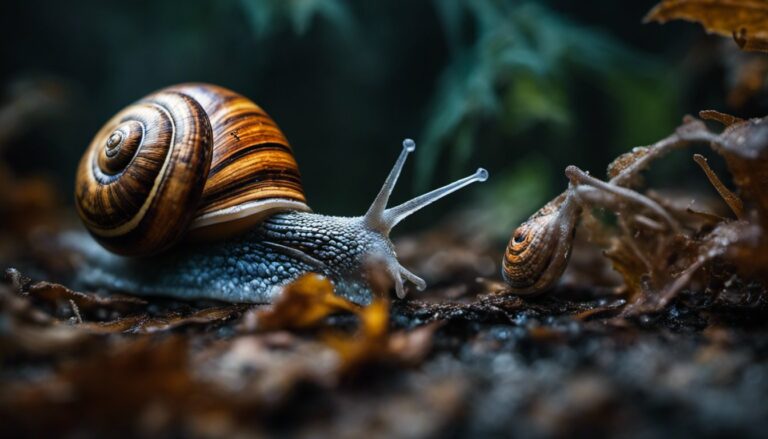
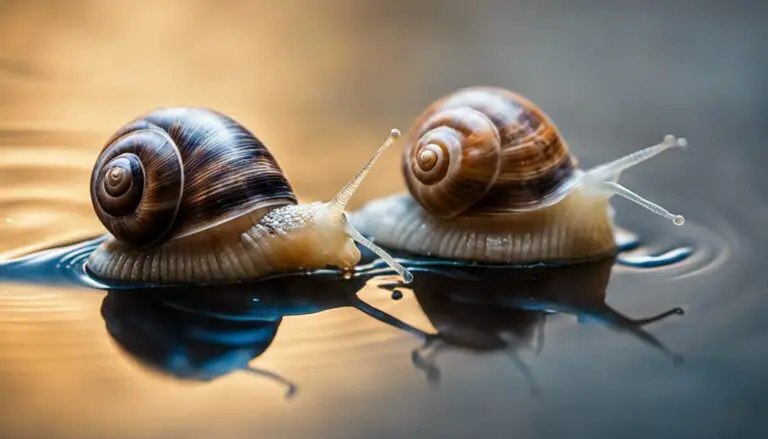


![Do Snail Shells Grow? [Full Guide]](https://allourcreatures.com/wp-content/uploads/2021/11/growing-snail-shells-768x501.jpg)
